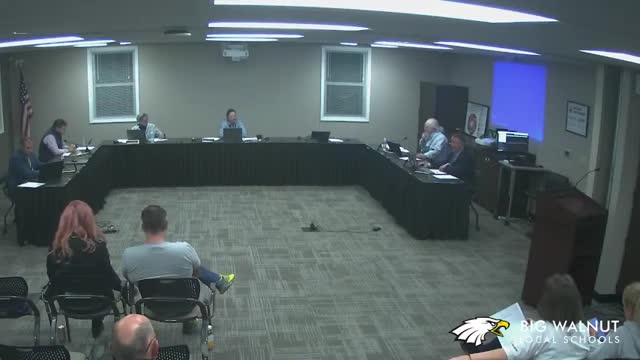Treasurer reports healthy cash position but warns pending state bills could reshape school funding
November 18, 2025 | Big Walnut Local, School Districts, Ohio

This article was created by AI summarizing key points discussed. AI makes mistakes, so for full details and context, please refer to the video of the full meeting. Please report any errors so we can fix them. Report an error »

Treasurer Scott delivered the district’s October financial report, saying the district remains in a strong fiscal position through the first four months of fiscal year 2026. He reported total revenues and other financing sources of about $32,680,000 (slightly above forecast), expenditures up modestly due to instructional investments, and an ending general-fund cash balance of $35,940,000 with encumbrances of $6,310,000, leaving an unencumbered balance of roughly $29,630,000.
Scott described changes to investment strategy (a laddered approach to maturities), a switch in insurance carriers that will produce a 0% increase at renewal in January, and higher near-term supplies/materials spending driven by textbook adoption and software licenses.
He also briefed the board on several pieces of pending state legislation that the district is monitoring closely, including House Bills 129, 309, 186, 335 and other measures potentially affecting property taxes, budget-commission authority and school funding formulas. Scott said several of those bills were scheduled for committee consideration in the week following the meeting and suggested the district would continue active engagement with the county budget commission and state representatives to protect local revenues.
Board members asked clarifying questions about how the bills could affect multi‑year forecasts and the district’s ability to certify long‑term contracts. Scott said his office is preparing for multiple scenarios and will provide updates at future meetings; he said if significant legislative changes materialize the district might need to revisit forecasts and possible community funding requests earlier than planned.
Scott described changes to investment strategy (a laddered approach to maturities), a switch in insurance carriers that will produce a 0% increase at renewal in January, and higher near-term supplies/materials spending driven by textbook adoption and software licenses.
He also briefed the board on several pieces of pending state legislation that the district is monitoring closely, including House Bills 129, 309, 186, 335 and other measures potentially affecting property taxes, budget-commission authority and school funding formulas. Scott said several of those bills were scheduled for committee consideration in the week following the meeting and suggested the district would continue active engagement with the county budget commission and state representatives to protect local revenues.
Board members asked clarifying questions about how the bills could affect multi‑year forecasts and the district’s ability to certify long‑term contracts. Scott said his office is preparing for multiple scenarios and will provide updates at future meetings; he said if significant legislative changes materialize the district might need to revisit forecasts and possible community funding requests earlier than planned.
View full meeting
This article is based on a recent meeting—watch the full video and explore the complete transcript for deeper insights into the discussion.
View full meeting
